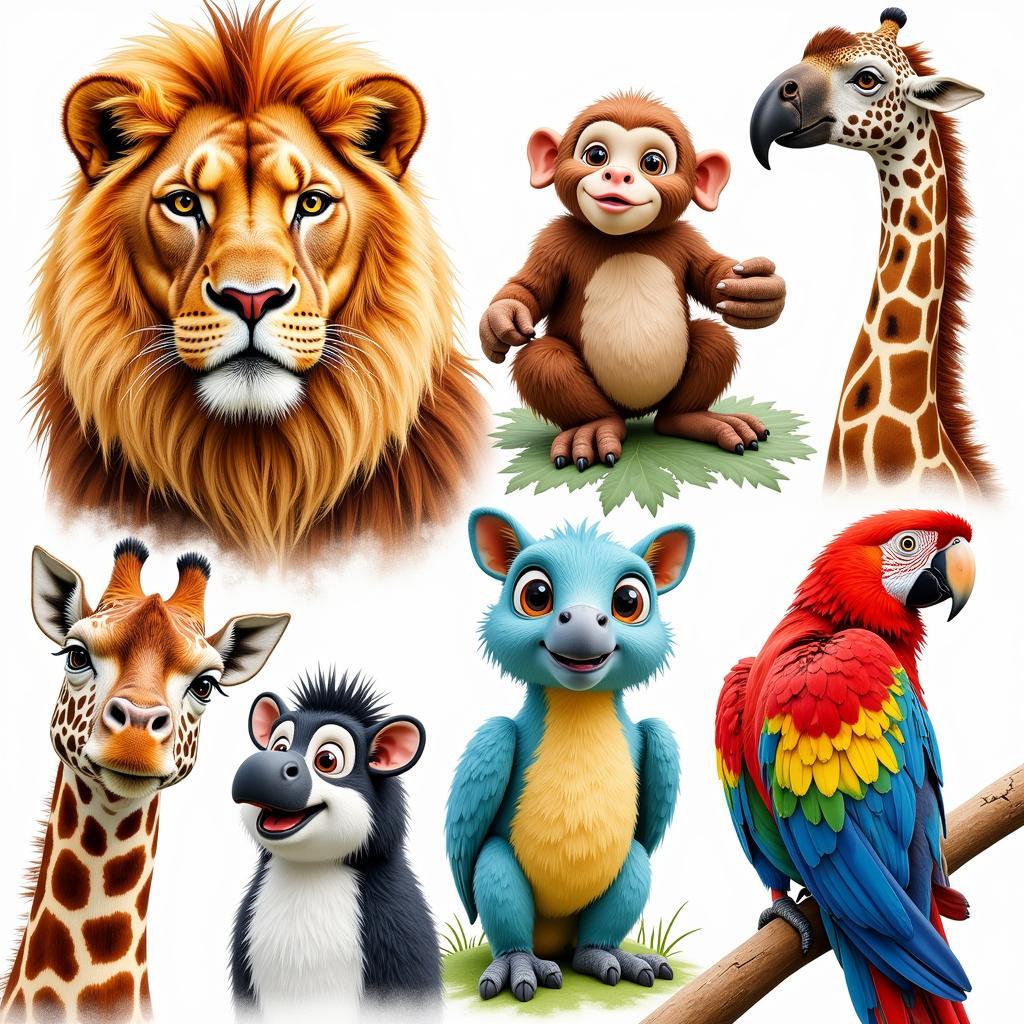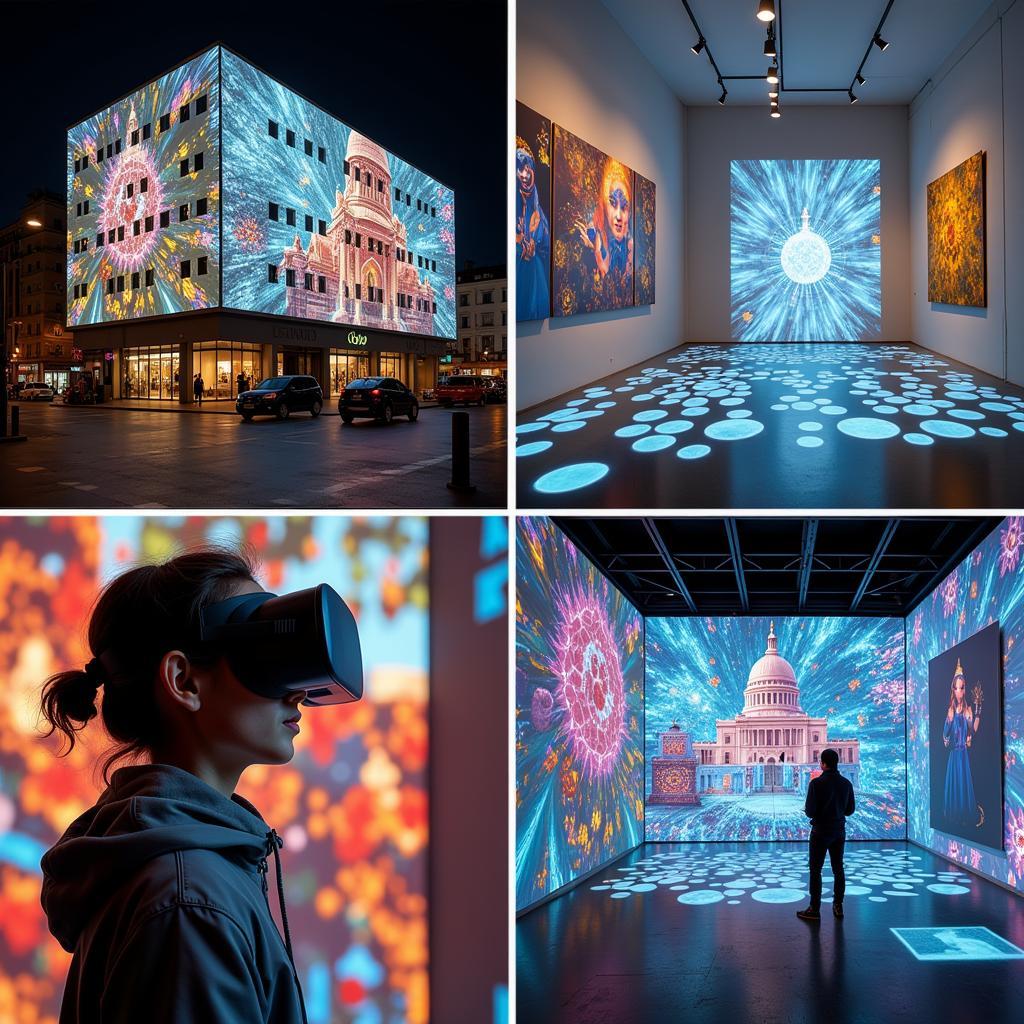Exploring the Intersection of Chance and Creativity: What is Luck Art?
Luck Art, a captivating fusion of chance and artistic intent, challenges traditional notions of creative control. By embracing the unpredictable, luck art invites artists and viewers alike to find beauty in the unexpected and discover meaning in randomness.
Embracing the Unforeseen: The Essence of Luck Art
At its core, luck art relinquishes complete artistic control to chance procedures. This can involve anything from flipping a coin to determine brushstrokes to using natural elements like wind or water to shape the artwork. The artist sets the parameters, but the final outcome is, to some extent, left to fate.
This relinquishing of control, however, doesn’t diminish the role of the artist. Instead, it demands a different kind of creative engagement. Luck artists become masters of setting the stage for chance to work its magic. They carefully consider the materials, tools, and processes they employ, knowing that each element will influence the final result.
From Dada to Generative Art: A Historical Perspective
The roots of luck art can be traced back to the early 20th century with the Dada movement. Dadaists, disillusioned with traditional art forms, embraced randomness and absurdity as a form of social critique. Artists like Marcel Duchamp, with his readymades, challenged the very definition of art and highlighted the role of chance in artistic creation.
The mid-20th century saw the rise of Fluxus, a movement that further blurred the lines between art and life. Fluxus artists like Yoko Ono and John Cage incorporated chance procedures into their performances and compositions, emphasizing the ephemeral and the unpredictable.
Today, with the advent of technology, luck art has taken on new dimensions. Generative art, a contemporary form of luck art, leverages algorithms and computer programs to create artworks based on pre-determined rules and random variables.
More Than Just Randomness: Finding Meaning in Luck Art
While chance plays a pivotal role in luck art, it’s important to remember that the artist’s intention is never entirely absent. Luck art is not about simply throwing paint at a canvas and calling it a day. It’s about setting the stage for chance encounters, creating a space where the unpredictable can interact with artistic vision.
The beauty of luck art lies in its ability to surprise both the artist and the viewer. It challenges us to look beyond our preconceived notions of what art should be and to appreciate the beauty of the unexpected. In a world obsessed with control and perfection, luck art offers a refreshing reminder that sometimes the most beautiful things in life are those we can’t predict or control.
Luck Art: A Catalyst for Exploration and Discovery
Whether you’re an artist seeking new ways to push creative boundaries or an art enthusiast eager to experience art that defies expectations, exploring luck art can be an enriching journey. By embracing the element of chance, luck art invites us to step outside our comfort zones, to question our assumptions, and to discover the unexpected beauty that can arise when we relinquish complete control.
Frequently Asked Questions about Luck Art
1. Is luck art really art if the artist isn’t in complete control?
This question lies at the heart of the debate surrounding luck art. While the use of chance challenges traditional notions of artistic authorship, it doesn’t negate the role of the artist. Luck artists carefully choose their materials, techniques, and parameters, setting the stage for chance to operate within. The artist’s vision is still present, but it’s expressed through a different lens—one that embraces the unknown.
2. What are some common techniques used in luck art?
Luck art encompasses a wide range of techniques, including:
- Dice throwing: Using dice to determine elements like color, composition, or brushstrokes.
- Coin flipping: Employing coin tosses to make artistic decisions.
- Wind and water: Harnessing natural elements to shape the artwork.
- Computer algorithms: Utilizing algorithms and random number generators to create generative art.
3. How do I know if a piece of luck art is “good”?
Judging art is always subjective, and luck art is no exception. However, you can approach a piece of luck art by considering:
- The artist’s intention: Even though chance is involved, the artist still had a reason for creating the work. Try to understand the concept behind the piece.
- Your own emotional response: How does the artwork make you feel? Does it evoke curiosity, wonder, or contemplation?
- The interplay of chance and control: How has the artist used chance to create something visually interesting or thought-provoking?
4. Can anyone create luck art?
Absolutely! Luck art is a wonderfully accessible art form. You don’t need to be a trained artist to experiment with chance procedures and create something unique. All you need is an open mind, a willingness to experiment, and a sense of adventure.
Need More Inspiration?
For those intrigued by the interplay of chance and creativity, explore the world of horseshoe art for sale. Discover how everyday objects can be transformed into captivating expressions of art through chance encounters and artistic vision.
If you’re searching for ways to engage young minds with art, consider incorporating St Patrick’s Day handprint art into your celebrations. Let children embrace the joy of creating while exploring the magic of unpredictable outcomes.
Luck art invites us to reimagine the possibilities of creative expression. It’s a celebration of the unexpected, a testament to the beauty of randomness, and a reminder that sometimes the most captivating art arises when we relinquish complete control and embrace the power of chance.
Need Help with Your Artistic Journey?
Contact us today!
- Phone: 02462573573
- Email: danteum@gmail.com
- Visit us: Savico Megamall, 7-9 Đ. Nguyễn Văn Linh, Gia Thụy, Long Biên, Hà Nội 10000, Việt Nam.
Our dedicated customer support team is available 24/7 to assist you.



